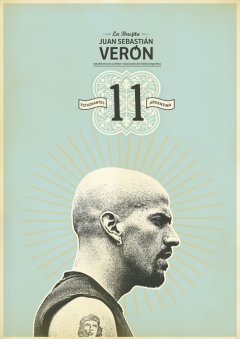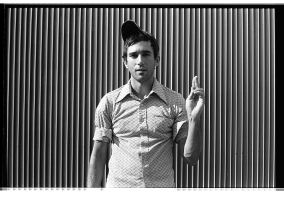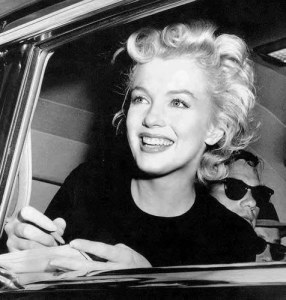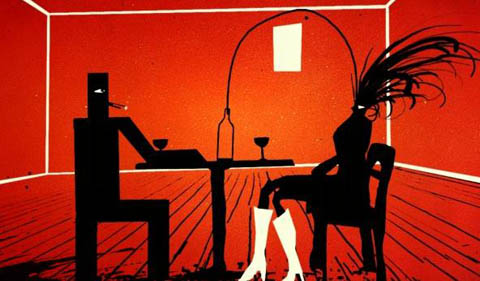
‘Super 8’ hits theaters June 10, and the viral marketing campaigns for it have been spinning like mad. Director J.J. Abrams loves a good viral campaign and is probably one of the few directors who actually thinks about it as he’s constructing the initial movie. The success of ‘Super 8”s marketing remains to be seen, but there are plenty of online hints and movie references that nerds (ourselves included) will be digging through for months.
‘Super 8’ already has intrigue and mystery down, which you’ll see are two big factors in a successful online promotion. Below, we take a look at the seven best viral marketing campaigns in movie history.
7. ‘Snakes on a Plane’ (2006)

Some consider ‘Snakes on a Plane’ a disappointment at the box office. However, the movie grossed over $62m. That is staggering considering almost every person who paid to see it, did so “ironically.” The movie became a hit simply because of its name making the rounds online. New Line already had a Internet phenomenon before they even started marketing it, proving names do matter.
6. ‘Inception’ (2010)

After Christopher Nolan’s ‘The Dark Knight’ enjoyed overwhelming success — due in some part to its viral campaign — it stood to reason the progressive director would want the same for ‘Inception.’ Keeping most of the film under wraps, the stealth marketing team put together the ‘Mind Crime’ virtual game online and produced a series of “real” interviews with scientists who specialize in dreams. Fans were already interested, but these efforts pushed their intrigue past the tipping point.
5. ‘Paranormal Activity’ (2009)

Made for a mere $15,000, ‘Paranormal Activity’ grossed over $193 million. The filmmakers owe a lot of their success to hitting the social networks hard, especially Twitter. After the film’s limited release, they encouraged viewers to “Tweet Their Screams” and write 140-character-long reviews. After Paramount saw the online interest, the studio announced they’d launch it nationally if the movie received one million “demands” on Eventful. They made people work for it and, therefore, gave them a vested interest before even seeing it.
4. ‘Cloverfield’ (2008)

Director J.J. Abrams already had experience with viral marketing from his TV show ‘Lost,’ which had ‘The Lost Experience’ online. The studio used similar online tie-ins for ‘Cloverfield.’ However, wanting to keep the film as much of a secret from scoopers as possible, they misdirected information online, calling the movie ‘Slusho’ and ‘Colossus,’ despite already knowing the title. Fans started looking for hints everywhere before ‘Cloverfield’ was even close to theaters.
3. ‘The Dark Knight’ (2008)

Like ‘Cloverfield,’ ‘The Dark Knight’ used misdirection. One of the first marketing stunts was a fake website for Harvey Dent’s campaign for district attorney, complete with shareable “I Believe in Harvey Dent” political posters. The posters slowly changed to an image of the Joker with the text, “see you in December.” The final push launched WhySoSerious.com, which revealed more images of the Joker as well as the first teaser trailer, helping the film gross more than $1 billion.
2. ‘Toy Story 3’ (2010)

Instead of using misdirection to provoke interest, ‘Toy Story 3’ launched a unique viral video campaign with fake, vintage ’80s commercials for the toy Lots o’ Huggin Bear; Internet-only videos like one with Woody and Buzz on an IM chat; and hilarious ’70s-themed interviews with the Ken doll called ‘Groovin’ With Ken’; as well as his advice series ‘Ken’s Dating Tips.’ All of this excess creative content, as well as a Facebook application that allowed fans to purchase advance tickets through the site and update their friends when doing so, pushed the Pixar flick past $1 billion in sales.
1. ‘The Blair Witch Project’ (1999)

Before YouTube, Twitter, Facebook, MySpace and even Friendster, ‘The Blair Witch Project’ set the standard for guerilla marketing done virally. Shot on a shoestring budget at a time when fake documentaries weren’t commonplace, the film gave the impression this was real, actual “found footage.” The filmmakers and Artisan Entertainment supported that by building a website that backed this claim; they also circulated the rumors via online message boards. The film terrified audiences all the more when, in the back of their heads, they thought it might just be real.

















